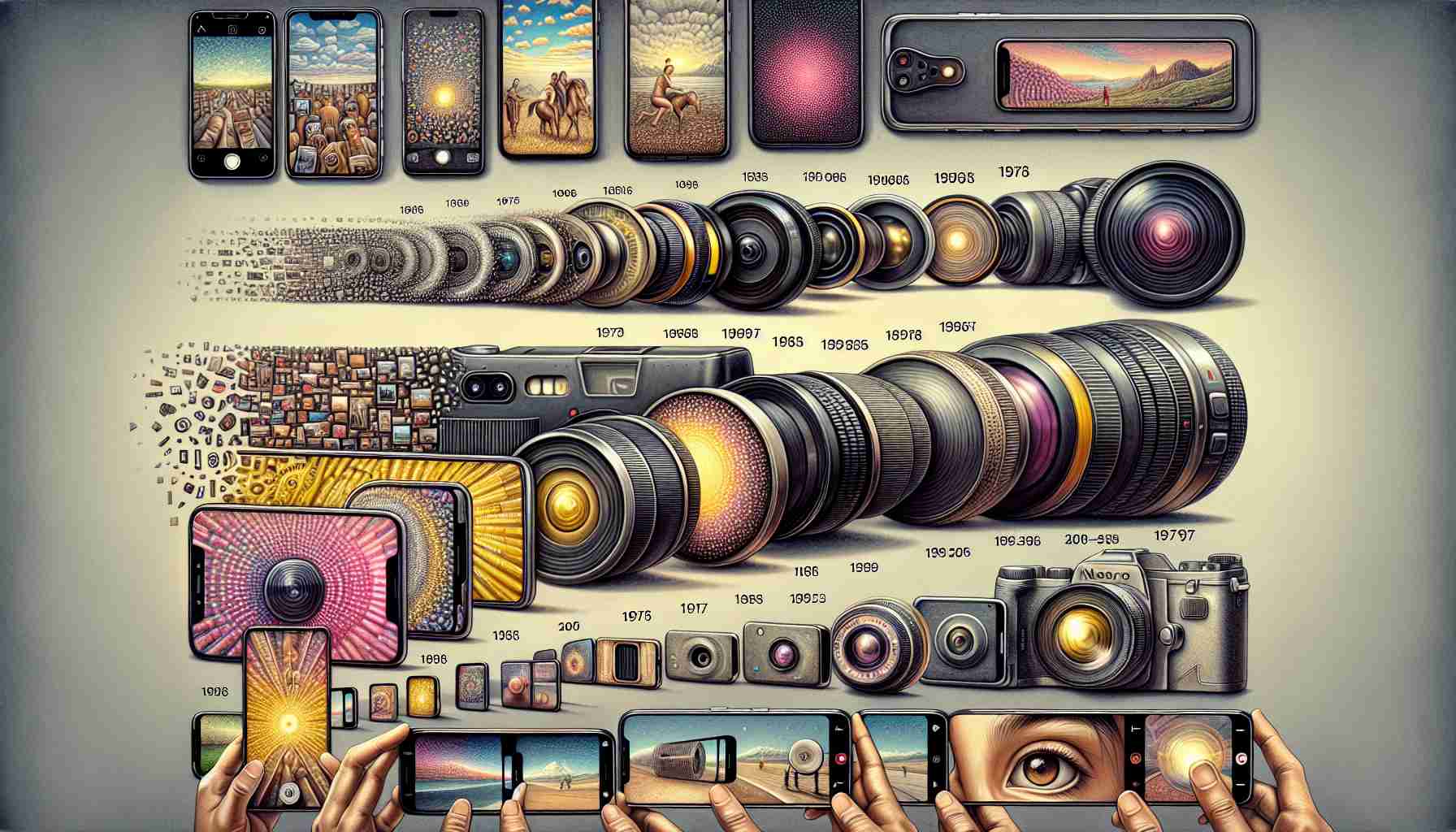The evolution of smartphone cameras has been nothing short of remarkable. These small technological marvels have transformed the way we capture and share our world. Let’s take a closer look at the incredible journey of smartphone cameras, from their humble beginnings to the cutting-edge features available today.
The story begins in the early 2000s, when the first camera phones emerged on the scene. These devices, like the Sharp J-SH05, had minuscule 0.1-megapixel cameras that offered little more than a novelty feature. However, they sparked the imagination of consumers and paved the way for future advancements.
As the years went by, the focus shifted to megapixels. Phones like the Nokia N90 and Sony Ericsson K800i became status symbols with their 2-megapixel and 3.2-megapixel cameras, respectively. This era also saw the birth of social media platforms like Facebook, creating a new avenue for photo sharing and social connection.
The late 2000s marked the rise of smartphones, with the Apple iPhone leading the way. While its camera was modest at 2 megapixels, it offered convenience and integration with core functionalities like email and web browsing. This, coupled with the proliferation of app stores offering photo editing tools, democratized photography and made it accessible to everyone.
In the 2010s, manufacturers focused on improving image quality through better sensors, larger lenses, and advanced image processing software. Features like HDR and panorama mode became commonplace, and the selfie revolution took root with the introduction of front-facing cameras. Artificial intelligence also became a game-changer, with features like scene recognition and automatic white balance optimization.
The latter half of the 2010s brought the rise of multi-lens camera systems. Phones like the Huawei P9 introduced wide-angle lenses, telephoto lenses, and dedicated depth sensors for creating bokeh effects. AI-powered features further enhanced the photography experience, ensuring users captured stunning photos effortlessly.
Looking ahead, the future of smartphone cameras is filled with exciting possibilities. We can expect advancements in under-display camera technology and foldable phone designs, pushing the boundaries of form and function. Computational photography will continue to improve image quality and creative potential, with features like real-time object recognition and augmented reality integration.
The impact of smartphone cameras on society has been profound. They have democratized photography, fostered a more connected global community through social media, and empowered individuals to document and share their experiences. As technology continues to evolve, the possibilities for what we can achieve with smartphone cameras are limitless.
The journey from pixelated memories to pocket powerhouses is a testament to innovation and human creativity. Smartphone cameras have become powerful instruments for capturing moments, shaping narratives, and creating a visually vibrant world. The future of smartphone photography is bright, and we can’t wait to see what lies ahead.
The smartphone camera industry has experienced tremendous growth and innovation over the years. According to market forecasts, the global smartphone camera market is expected to reach a value of $9.3 billion by 2026, with a CAGR of 6.2% during the forecast period. This growth can be attributed to the increasing demand for higher quality and feature-rich smartphone cameras.
One of the key issues related to smartphone cameras is the race for higher megapixels. While megapixels are important for capturing detail, they are not the sole determinant of image quality. Other factors such as sensor size, lens quality, and image processing algorithms play a crucial role in producing high-quality images. Manufacturers are now focusing on improving these aspects to deliver better image quality to consumers.
Another important trend in the smartphone camera industry is the rise of computational photography. With the advancements in AI and machine learning, smartphone cameras are now capable of processing images in real-time, enhancing details, and optimizing settings for various shooting scenarios. This technology has revolutionized smartphone photography by enabling features like scene recognition, automatic image enhancement, and even real-time object tracking.
The demand for better low-light photography capabilities is also driving innovation in the smartphone camera industry. Manufacturers are incorporating larger sensors, wider apertures, and advanced noise reduction algorithms to capture clear and vibrant images even in challenging lighting conditions. This has been a significant improvement, as low-light photography was traditionally a weakness of smartphone cameras.
Another issue that manufacturers are addressing is the inclusion of multiple lenses in smartphone camera systems. This allows users to capture different perspectives, such as wide-angle shots or telephoto zoom. Dual-camera setups have become common, and some flagship smartphones now feature three or even four lenses, offering users a versatile photography experience.
The rise of social media platforms and photo-sharing apps has also played a significant role in the growth of the smartphone camera industry. People now use their smartphones as primary devices for capturing and sharing moments with friends and family. The convenience and accessibility of smartphone cameras have made photography a mainstream activity for users of all ages and skill levels.
As the smartphone camera industry continues to evolve, manufacturers are exploring new technologies and features. Under-display camera technology is one area of development, where the front-facing camera is hidden under the display, providing a seamless full-screen experience. Foldable phone designs are also becoming popular, offering users the flexibility to use their smartphones as both a phone and a tablet.
In conclusion, the journey of smartphone cameras from their humble beginnings to the cutting-edge features available today is a testament to the innovation and creativity within the industry. With advancements in technology, the industry is expected to grow further, offering consumers even more advanced features and capabilities. The impact of smartphone cameras on society has been significant, democratizing photography and connecting individuals on a global scale through social media. The future of smartphone photography is indeed bright, and we can expect to see exciting developments in the years to come.
For more information on the smartphone camera industry, you can visit the following link: Smartphone Camera Market – Statista.
